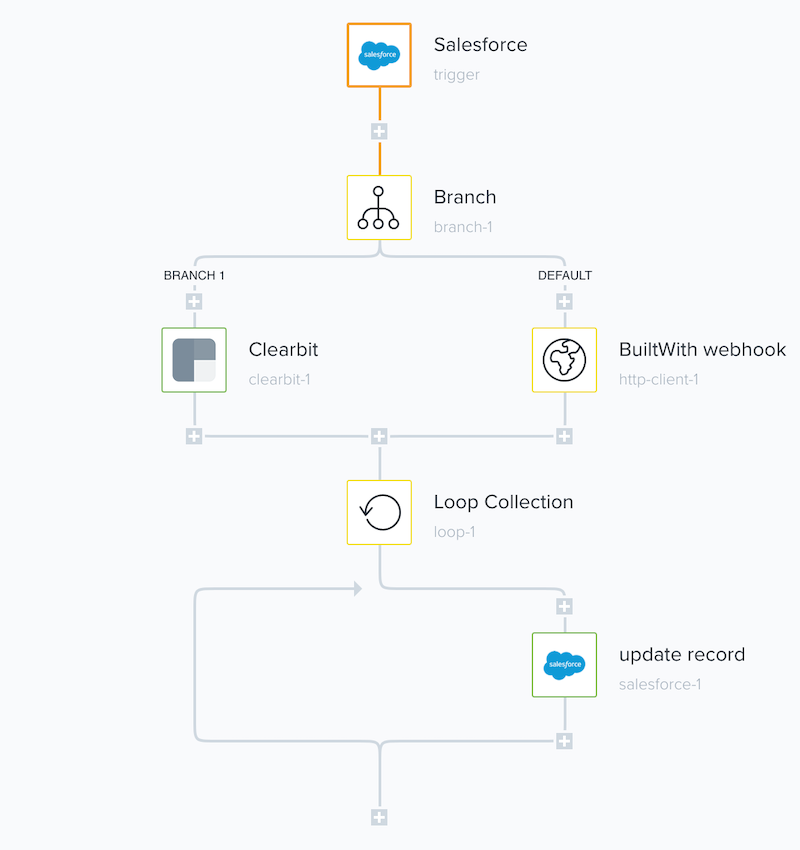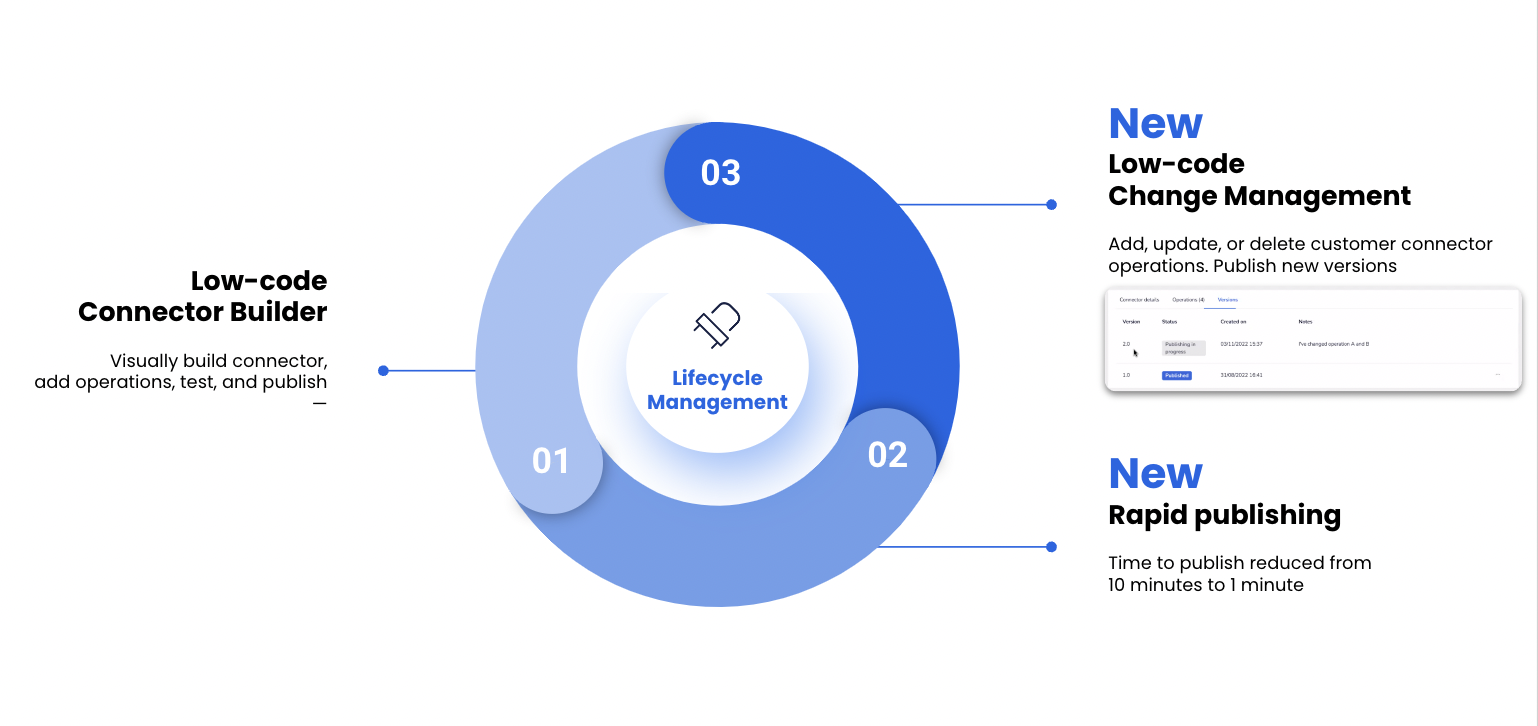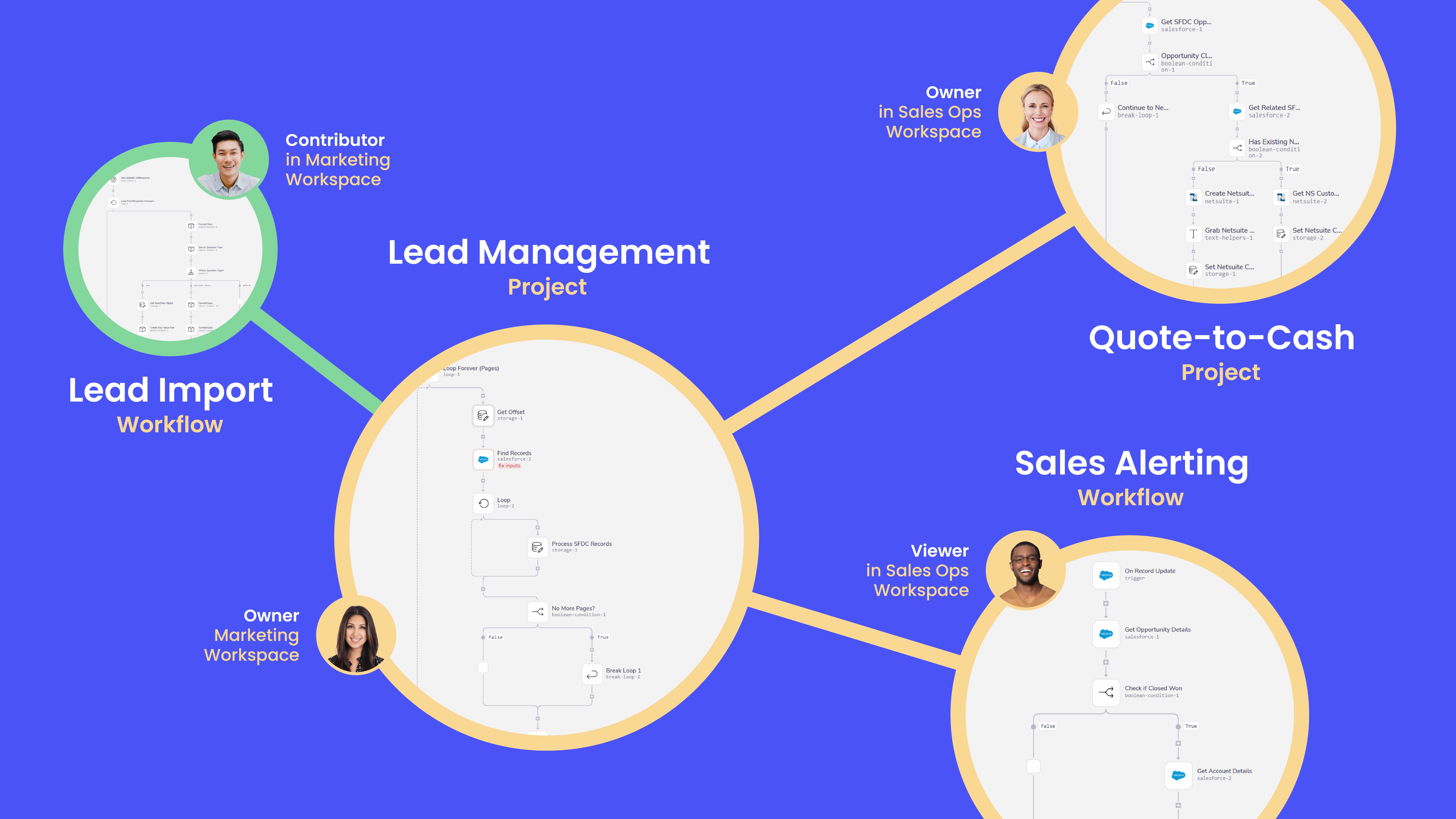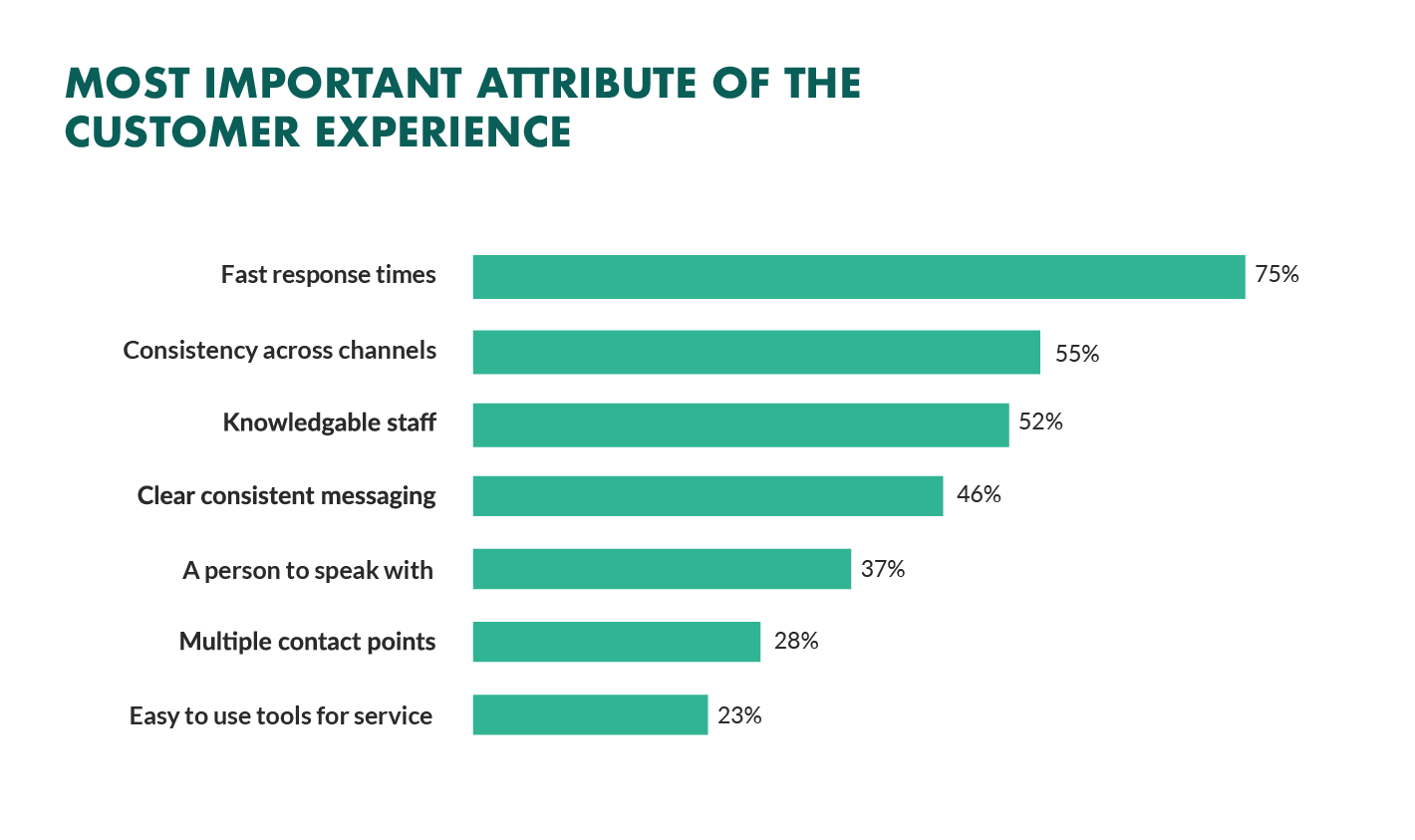5 signs you need to uplevel your automation platform


Adam White
Content Marketing Associate @ Tray.io
Not all automation platforms are created equal. But some can definitely be outgrown. Look out for these five signs that it may be time to upgrade.
Automation platforms are no longer a “nice-to-have.” They’re downright necessary for growth. Businesses of all sizes, rattled by uncertain economic conditions, have turned to automation platforms to help their teams accomplish more by eliminating tedious, manual processes, unburdening overtaxed IT teams, and boosting efficiency - all of which helps businesses maximize revenue without needing to increase headcount or adopt additional productivity software.
Also known as iPaaS (integration platform-as-a-service), these platforms are designed to integrate and automate data exchange between different systems. However, not all automation platforms are created equal, and many businesses are discovering they need more flexible and powerful automation capabilities if they want to scale their operations.
This is where “upleveling” comes in – upgrading your current automation platform to a more powerful solution that offers a wider range of features and capabilities, allowing you to take your automation strategy to the next level. But what are the signs that you should uplevel your automation platform?
We’ll reveal the telltale signs that your current automation platform is no longer cutting it, and may actually be inhibiting your growth. Whether you’re currently using an entry-level tool or a legacy solution, we’ll help you understand the benefits of upgrading to a more modern and powerful automation solution.
1. You need more complex workflows
Automation is a journey that starts with simple automated workflows and gradually moves towards complex workflow orchestration across multiple applications, databases, and services.
Entry-level automation platforms are often referred to as “point-to-point integration” tools. In other words, they’re great at connecting and automating processes across two applications (one point to another). But many of your business processes involve multiple applications. Consider the lead lifecycle process: you may upload leads from a CSV, enrich them in Clearbit, create the record in Salesforce, then notify the assigned salesperson via Slack. That's already four different processes across four different apps. It’s likely your lead process is even more complex than that.

Your business processes are also more complex than just "if this, then that," and using low-end tools can force you to compromise. If you can draw your ideal process on a whiteboard, your automation tool should be able to visualize it as well. Often your ideal process will include numerous conditional branches, perhaps multiple nested loops, and lots of other logic. If your tool can't handle it -- it means you need to cut corners with your process, or worse, end up supplementing with scripts.

An example of a complex workflow with conditional branching and loops.
Modern automation platforms, on the other hand, are purpose-built for complex workflow orchestration across multiple applications, databases, and services, and offer complex business logic such as control loops, branches, nesting, and CSV data set manipulation.
2. You need more flexible connectivity
Offering hundreds (or thousands) of connectors is one thing. But as your business grows and workflows become more complex, the need for flexible and scalable automation becomes essential. One of the most common signs that your current automation platform needs an upgrade is when you require connectivity to more specialized applications or databases that your current platform doesn't support, or only supports in a limited capacity. You’re left to either create time-consuming and error-prone custom workarounds, or you’re forced to use multiple platforms to manage your integrations, leading to fragmentation and complexity.
While many automation platforms offer a library of pre-built connectors, these connectors may not cover all the operations you need. You may hit a "connector wall" and struggle to connect to additional operations in your CRM or ERP that the connectors don't cover. Therefore, you need a solution that can connect to any REST, SOAP, or GraphQL API on demand, so no API or operation is out of reach.
You’ll also want to be able to build your own connectors easily. This is essential, whether a connector doesn’t exist or you need to build a connector that wraps in new endpoints from your CRM or connectors to a homegrown app. Modern automation platforms offer low-code visual builders that let users create their own connectors without the need for extensive API knowledge. By upleveling to a more modern automation platform, you can ensure flexible connectivity that meets all of your integration requirements.

Modern automation platforms like Tray.io let users build, modify, and publish custom connectors for complete lifecycle management.
3. You get too many operational headaches
The problem with entry-level or legacy automation platforms is that they don’t grow with you. Once you get to a point where you've got multiple people looking to build integrations and automated workflows, you’ll hit a headache inflection point. Without collaborative features like workspaces, projects, and role-based access control, you’ll consistently run into conflicts.

With modern automation platforms like Tray.io, you can improve day-to-day automation management and governance by logically grouping together related workflows within a single project, and manage all your team’s automated processes from your team-based workspace.
Additionally, you'll need to ensure you can reuse all your integrations across teams, so people aren't reinventing the wheel all over the place. Often, entry-level platforms aren’t composable, meaning that it's impossible to reuse business logic in multiple workflows or combine workflows. For example, if you’re building a lead lifecycle management process, you want to reuse investments made in lead import, routing, and enrichments. Reusing components reduces maintenance and is a best practice.
Another challenge with entry-level platforms is that they often lack error handling, debugging, and logging features. Basic error handling makes it difficult to branch based on error conditions, handle errors gracefully, or receive notifications if specific parts of a workflow fail. The lack of detailed logs makes it challenging to diagnose errors. These platforms may also lack instrumentation, making it impossible to track all automations and see what's working and what's not from a bird's-eye view.
4. You need better scalability
Entry-level and legacy automation platforms can present scaling challenges as your automation needs grow. For example, when your API volume increases, and you're triggering workflows with high frequency – let's say a webhook from your CRM or ERP – you may encounter rate limits that prevents workflows from being triggered. This can result in errors and missed opportunities.
Additionally, entry-level platforms may not be able to handle bulk data integration, which can be a problem if you need to load large numbers of records into a database or analytics tool. This may require you to use multiple tools to accomplish your automation needs.
In contrast, modern automation platforms run on serverless architecture, which can handle tens of millions of records in minutes, so you can scale as your business grows. With elastic, serverless architecture, you only use what you need and never have to worry about throttling due to demand spikes. This means you can trust your workflows to run smoothly and solve real business problems without encountering scaling challenges.

The many benefits of serverless architecture, which automatically scales with demand, ensuring you’ll always be up and running. Image courtesy New Relic.
5. You’re tired of waiting for support
Nearly half of all software users expect their support request to be responded to within 4 hours. However, with entry-level and legacy automation platforms, customer support is almost always a user pain point. With fast response times being the most important attribute of the customer experience, you should expect a quick response from your automation partner. And that response should be from a human, not a chatbot.

A survey of 1,000 companies cited fast response times as the most important attribute of the customer experience. Image courtesy SuperOffice.
If you feel you’re constantly reaching out to the support team for help on certain functionality, you’re probably attempting to push the limits of what the platform can accomplish. It’s even worse when, after waiting days or weeks for a response, the answer is simply “Our platform doesn’t support that kind of functionality.”
As your workflows become more sophisticated and support more critical business processes, you need an accessible, responsive, and personalized support system to ensure you’re getting the most out of your automation platform. At the same time, you need a vendor that can help guide and expand your integration and automation initiatives through intermittent check-ins, office hours, and curated content.
Providing top-tier global support should be a core priority for your automation vendor. When evaluating solutions, look for reviews that mention a responsive support team, in-app chat, dedicated Slack channels, email, or phone, and integration and automation experts to help you resolve issues quickly and ensure you’re always set up for success.
Why customers choose Tray.io as their integration and automation solution
Automation is key to unlocking productivity and innovation in businesses, but the limitations of entry-level and legacy automation platforms can cause more headaches than solutions. That's why modern automation platforms like Tray.io are so important for businesses looking to streamline their workflows and scale their operations.
Tray.io lets users collaborate, connect, and orchestrate complex workflows across multiple apps, databases, and services with ease. With its intuitive visual builder, extensive library of pre-built connectors, and low-code connector builder, Tray.io offers a flexible and powerful automation platform that can be tailored to the unique needs of any business.
Here’s what a few of our customers have to say:
The real testament to the power of automation is how much time we’re saving. In the last three months [with Tray.io], we’ve automated 30% of our expected IT output. We’ve been able to streamline 30% of manual IT tasks, which has helped us build out our IT practice and scale our capabilities without being required to scale our headcount. Now, we can now focus on bigger, more-impactful projects.
Accurate, professional, and personable service as always from the Tray.io team!
We operate at a massive scale; we have a large sales team and get ~80,000 leads per day across thousands of channels. Before implementing Tray, we were sending 90% of our leads to the sales team in under 10 minutes. After implementing Tray, we are sending 99% of our leads to the sales team in under 3 minutes!
From marketing to sales to HR and beyond, Tray.io is the go-to automation platform for businesses looking to transform fragmented business processes into powerful outcomes. With Tray.io, users can build the workflows they need to drive growth, innovation, and efficiency in their businesses, all while knowing they have the support and scalability they need to succeed.
To learn more about how Tray.io can help your organization achieve its integration and automation goals, click here.